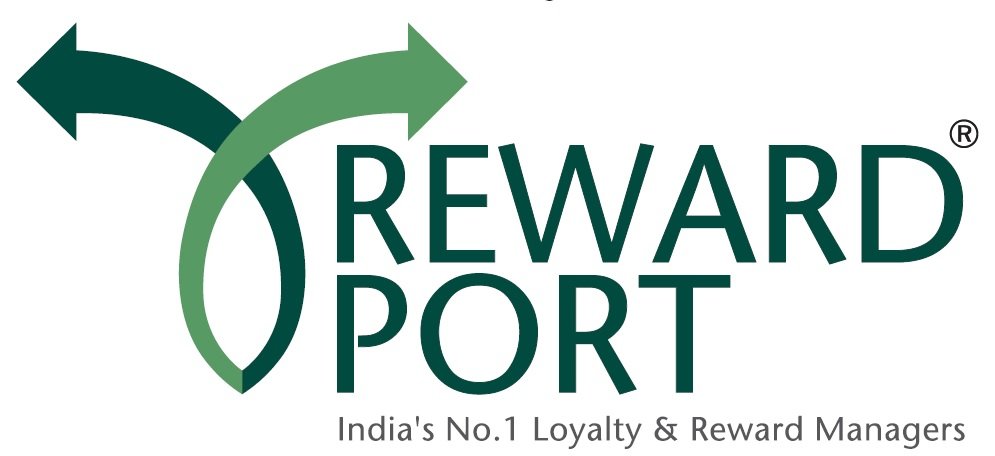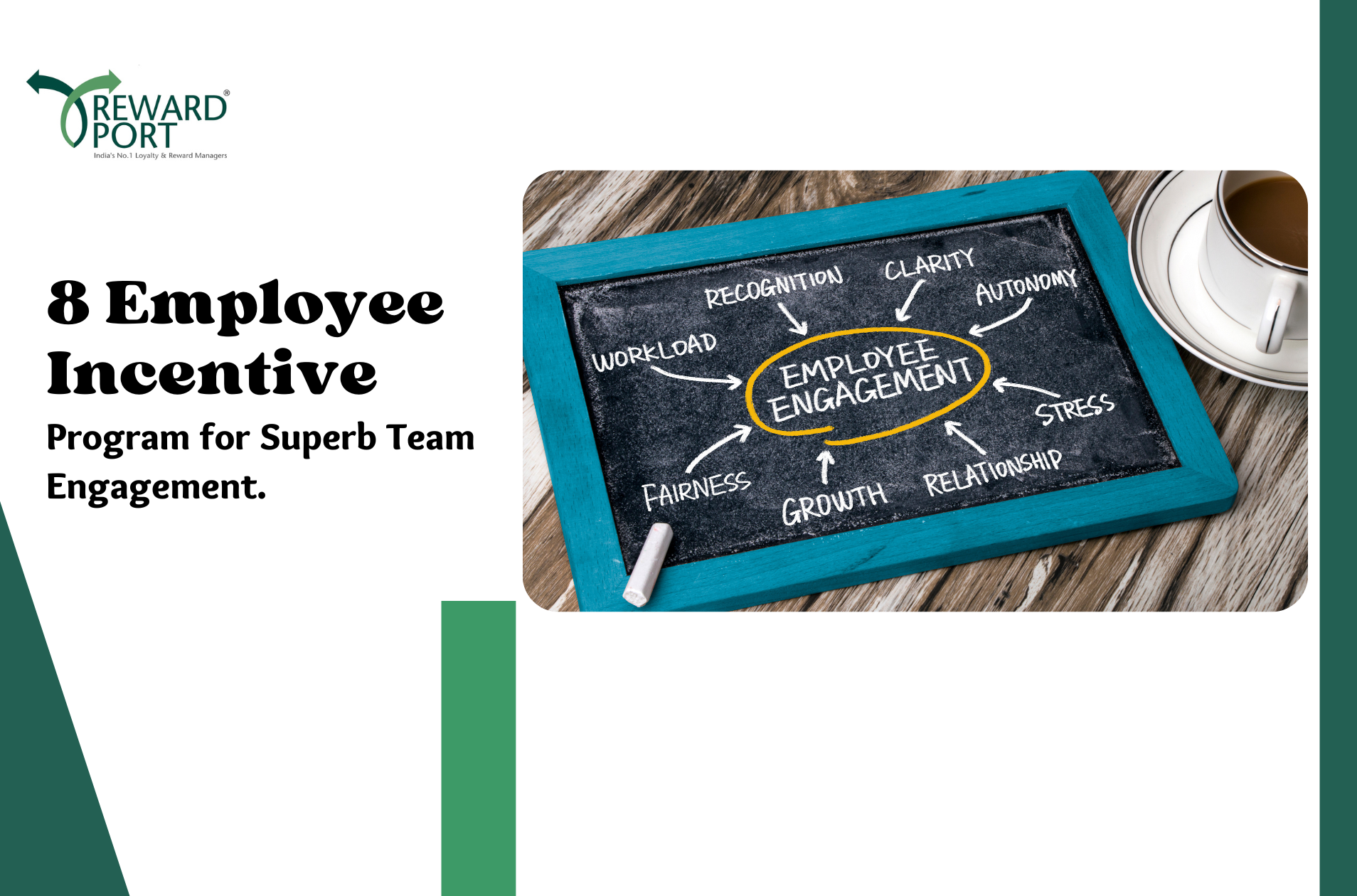
8 Employee Incentive Program for Superb Team Engagement

What is Employee Engagement? Employee engagement in the workplace is the practice of working with dedicated employees who don’t simply do their work because they are paid for it but because they are entirely immersed in it.
Who wouldn’t enjoy working with such individuals? Even while your company could value such dedication and participation, it’s important to consider whether you’re doing enough to encourage them and conduct employee rewards programs.
One of the well-liked methods to raise employee engagement is by appreciating them and sparking dedication by introducing employee rewards programs.
How Hazardous is Disengagement in the Workplace?
The term “disengagement” is blatantly harmful to companies. Even while disengagement can be very subtle and challenging to spot, it can result in glaring issues like low morale, high attrition, and low productivity.
These disengagement figures are important for you to be aware of.
The total cost of employee disengagement to businesses is close to $450 billion annually.
One of the best employee rewards for retaining engagement is a demanding environment. According to a different study, 33% of employees switch jobs in search of more challenging positions.
How therefore may employee engagement be increased? Programs with incentives may be useful.
What are incentive programs for employees, and how can they boost engagement?
We’ve covered enough of employee disengagement and its consequences to return to encouraging engagement.
Employee incentive programs are created to keep the best personnel on board and to keep them engaged in and satisfied with their work. The most well-known and well-liked of these incentive schemes is the employee rewards one. But there are so many more varieties. The best employee incentive programs, which will notably improve levels of engagement as listed below.
Employee incentives and prizes are unquestionably effective motivators for keeping workers interested in their jobs. Rewards are classic motivators, yet they still function well. A well-known survey found that 69% of workers still view rewards as a fantastic motivation to raise engagement levels.
However, by making the appropriate technological and instrument investments, you can increase their effectiveness.
Employee Incentive Programs for Amazing Employee Engagement
1. Rewards and Recognition
Employee incentives and prizes are unquestionably effective motivators for keeping workers interested in their jobs. Rewards are classic motivators, yet they still function well. A survey found that 69% of workers still view employee rewards as a fantastic motivation to raise engagement levels.
However, by making the appropriate technological and instrument investments, you can increase their effectiveness.
2. Learning and Development Programs
L&D programs can be very successful employee incentive programs in addition to being strategies to enhance skills. Employees today are just as interested in financial rewards as they are in their professional development.
Because of this, well-crafted L&D programs may keep their interest and encourage them to remain in their positions for a longer period. Recognize the training and educational needs of your staff and provide them with the same incentives. Your staff will appreciate the effort because such L&D programs can be expensive to afford separately.
3. Workplace Flexibility
Offering flexibility is one of the most successful employee reward programs that are also simple to execute, which may surprise you. The ability to select the ideal tasks and work hours is one example of flexibility. It can also entail removing constraints and allowing workers to work from wherever they like.
Flexibility fosters freedom and innovation, which keep workers motivated.
4. Gifts and Rewards
A fantastic way to keep your employees engaged is to give them enjoyable presents that demonstrate your concern. Nearly every organization has a gift or incentive program in place. It matters how you select these presents and how you distribute them.
Make sure to include enjoyable, personalized presents that you can give out on special occasions like anniversaries and holidays in the list of incentives for employees.
Such presents don’t have to be pricey undertakings. Depending on the circumstance, a gift card, a personal note, and little nibbles are all suitable possibilities.
You can also think of personalized tech accessories, spa days, movie tickets, and another spectrum of rewards which you must avail from a high-quality brand i.e., RewardPort which is India’s leading rewards and solutions company.
5. Strategic Recognition is Must
Maintaining a positive work environment is crucial; organizations that use strategic recognition are more likely to see increased employee engagement levels.
Your staff should constantly update and improve their abilities, and praise and prizes encourage them to do so.
According to studies, workers who are given credit for their accomplishments are more inclined to push themselves and become more productive.
6. Professional Development
Millennials place the highest priority on professional development, with 40% of employees with restricted possibilities leaving after five years. They care when you invest in their careers, and they’ll stay with you for the long run. The fresh insights and experiences that staff members bring to the table are advantageous to your business as well, creating more internal advancement prospects.
Like Facebook, you may also offer a coaching program for new managers. Managers receive one-on-one time with an executive mentor at the program’s conclusion. To make your current courses more interesting, you might even consider gamifying them.
7. Profit Sharing
A defined contribution plan, such as a profit sharing plan, can be used in place of or in addition to more conventional plans like a 401k. Employees who participate in a profit-sharing plan get contributions to their retirement accounts (in the form of cash or shares) as well as direct payouts on occasion. Employers are able to cut these at any moment, allowing them to control costs for a year or two as needed.
Employees that participate in profit sharing begin to see themselves as owners rather than just employees. As a result, employees are encouraged to stay with the company and put in their sweat equity to help it expand.
8. Fun Gifts
Giving gifts to your staff to show appreciation demonstrates your concern. For company-specific holidays like work anniversaries, customer service week, global wellness day, or boss’s day, gifts make excellent incentives. Create enjoyable contests and quizzes to gamify each of these holidays, and reward and honour staff members who participate the most.
Key Takeaways
Without a question, employee incentive programs are essential for controlling employee engagement levels at work. An engaged employee is more autonomous, innovative, and invested, all of which will have an impact on the productivity and expansion of your business.
It’s time to start focusing more on your employee rewards programs if you haven’t already. Lack of involvement may spread like a weed, quickly taking down everything good with it. Therefore, it’s crucial to spot the weed early on and pull it up. Employee incentive schemes can assist in taming negativity and encouraging better employee engagement and experience.
To learn how to modify your current employee incentive programs, contact RewardPort. Our experienced and dedicated team of marketers understands your needs and creates strategies that work like a pro. We have been titled as India’s leading loyalty program company, and now we aim to make your brand number 1.

Gamifying your workforce: How to make employee engagement fun?
Gamification is a popular method for making the user experience more engaging and enjoyable. Over the past decades, gamification has entered almost every people’s engagement process including the workplace. Managers are realizing that internal gamification can promote employee loyalty, productivity, and engagement.
Businesses have discovered that by incorporating game elements into the standard employee-manager dynamics, employees are more likely to stick around, especially in a remote setting. Here’s how to use gamification to benefit your employees.
What Is Gamification?
Gamification is the process of incorporating game elements into non-game activities such as working or studying. Gamification in the workplace can boost employee engagement, satisfaction, and retention. This is particularly crucial for businesses with a remote workforce who want to provide a positive employee experience.
Benefits of Gamification
Gamification has enormous potential benefits for any workplace, particularly when used in workforce training. Gamifying employee onboarding and introductory training can reduce employee turnover and create a more engaged workforce.
Gamification could be especially beneficial for the remote workforce. Gamification can instantly connect the dispersed workforce around a single point of reference everyone can relate to.
1. Makes the learning process enjoyable and engaging
Gamification techniques such as interactive visuals and infographics can help people retain up to three times more information than they would otherwise. Gamification increases a person’s willingness to study and learn more enjoyably and interactively.Getting personally interested in the content is a significant barrier to learning. Pacing is provided by gamification, allowing students to process information comfortably.
2. Reduces employee stress
Gamification, according to employees, makes them happier and more productive at work. Stress contributes to negative work environments, an unhappy workforce, and increased job dissatisfaction.Employee performance improves when employees are less stressed and more relaxed. Gamification in the workplace can significantly improve employee outcomes.
3. Attracts a younger workforce
When it comes to onboarding a digitally native workforce, gamification is especially effective. Younger generations have distinct motivational and behavioural patterns, necessitating a set of techniques that better align their learning and skill development styles with business goals. Gamified onboarding is a natural, enjoyable, and effective solution for a changing workforce.
Where to Use Gamification?
It is always more fruitful to focus on the areas where gamification has a greater effect on the desired outcome. Gamification systems can help an organization in a variety of ways:
1. Development and Learning
Games can help both new and experienced employees learn new skills. Gamification of learning platforms has the potential to improve retention and results.
2. Customer Service
Gamification achievements and rewards can motivate employees to provide better service to customers. They also encourage employees to share new solutions and ideas with their colleagues.
3. Improving Sales
Gamification can boost salespeople’s collaboration. It rewards not only the final sale but also all the steps that lead up to it.
4. Teamwork
Games can help teams share information and learn from one another even if they are in different offices around the world.
5. Marketing
Employers can encourage employees to share company information on social media.
6. Inventory Management
Gamification encourages efficient processing and shipping.
7. Human Capital
HR professionals can use gamification to track performance reviews, develop leadership skills, provide peer appreciation, engage applicants, and increase referrals.
8. Product Development
Games can help employees finish projects on time, collaborate more effectively, and be more efficient.
9. Creativity
Employers can reward employees who come up with novel ideas.
10. Corporate Culture
Gamification can help promote the company’s culture through various projects and programs. It can assist employees in identifying opportunities to participate in shaping the company culture. Furthermore, it can improve access to information about the company and its values.
Why Does Gamification Fail & How to Avoid Failure?
Gamification in the workplace frequently fails due to internal communications’ inability to connect gamification in the workplace to their company’s business objectives. Furthermore, many managers fail to listen to their employees’ unique needs and motivations.
This often results in gamification projects that are not valued by the employees.
Internal communications professionals and business leaders should keep the following tips in mind to ensure their gamification efforts truly create engaged employees:
- Define the goals and objectives you hope to achieve by implementing gamification in the workplace. Do you want to increase employee engagement? Attained specific business objectives?
- Learn to listen to and comprehend your employees’ specific needs. What motivates them? What drives them?
- Create a gamification program that is tailored to your employees’ specific skills and motivations.
- When implementing gamification in the workplace, make sure to communicate the activity’s purpose to your employees.
- Experiment with the gamification process. Analyze what works and what doesn’t and adjust your gamification strategy as needed.
Ensure that all internal communications about the gamification process truly measure and gauge employees’ reactions.
Are they reading the emails you sent about implementing gamification in the workplace?
Are they reacting?
You can determine whether your employees are on board with the idea in the first place by measuring employee communications with email tracking tools.
Things to Keep in Mind
Gamification is effective when used correctly, but it can backfire if used incorrectly. It is critical to foster a healthy sense of competition, but not so much that your employees become demotivated. Sims reminds employers that people learn at different rates and that competition can be discouraging for those who don’t progress as quickly.
Another issue to be aware of is employees becoming complacent with your gamification program and settling into a consistent, comfortable routine.
It is critical to introduce new internal contests and real-world rewards regularly to reignite excitement and boost employee motivation; otherwise, you risk a fall in employee engagement and overall performance.
You should also exercise caution when using external incentives such as gift cards and products. While these things are nice to include as a perk or contest prize on occasion, using them as your sole incentive sends the wrong message about why people should be motivated to do a good job.
Employees aren’t training for a gift certificate; they’re training to add professional skills for long-term advancement. True business gamification emphasizes intrinsic rewards and benefits. It assists employees on their long-term path to greater success.
Draft Expert Gamification Programs
Gamification is a popular approach for a manager with a remote workforce that can make employee engagement fun. Including game elements in routine workplace activities can boost productivity, especially when combined with immediate feedback and the use of public recognition and rewards to further motivate a changing workforce with help of RewardPort programs which will provide you features such as scratch cards, spin the wheels, and slot machine pop-ups.
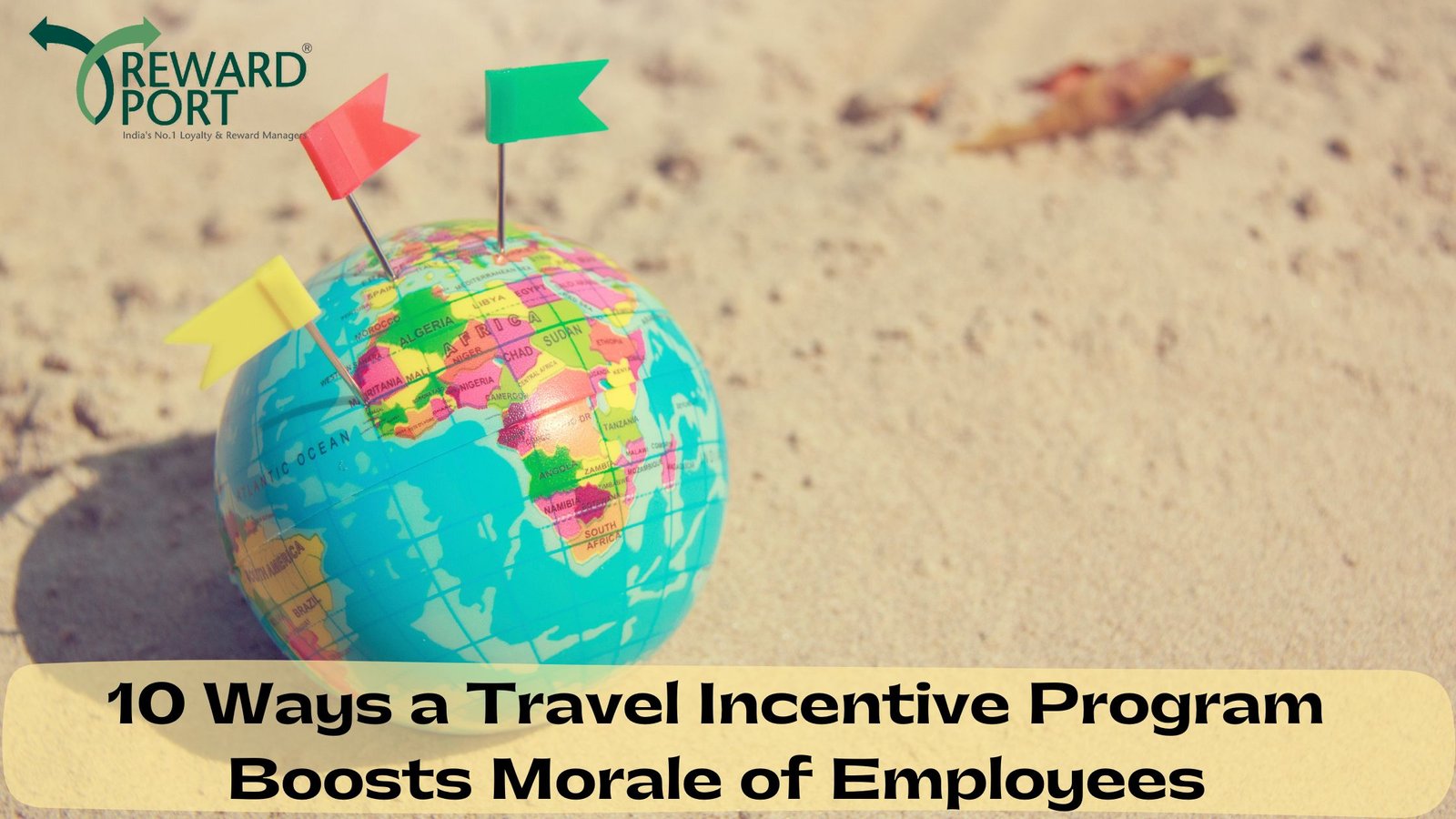
10 Ways a Travel Incentive Program Boosts Morale Of Employees
Incentives are used by successful organizations to reward and motivate employees, customers, and other stakeholders to engage in certain behaviors and avoid others. Incentive programs boost innovation and revenue while lowering losses and expenses and reinforcing corporate culture.
One study of incentive travel trends discovered a 22% improvement in performance after implementing a new program, increasing to 44-48% for programs in place for more than six months. Another study discovered that companies with effective incentive programs had 31% lower voluntary turnover.
Businesses invest in rewards such as cash, gift cards, trophies, recognition, time off, professional development, trendy merchandise, and the most prestigious award of all, leisure travel, to gain a competitive advantage in their markets.
1. Travel incentive programs have a huge impact
Organizations in the United States spend more than $100 billion per year on incentive rewards. The most common rewards across all programs are gift cards (71% of organizations), merchandise (38%), award points (36%), and travel (30%). Eighty per cent of programs use multiple types.
The top goals for sales programs are to increase overall revenue (80% of programs), boost morale (76%), and improve productivity (58%).
When many participants are earning rewards, cash and gift cards are used to reduce administration. When buzz is more important, trendy merchandise and leisure travel are used.
The ultimate reward is solo travel. Although travel can be difficult to manage, it has a huge impact that no one forgets. Celebrity Cruises offers individual cruise gift cards and certificates to relieve planners of much of the administrative burden.
2. Increase your value through word of mouth
The most powerful advantage of tangible noncash rewards over cash and cards is the recognition value.
Tangible awards are prominently displayed. Everyone knows who and how they got them. They create anticipation before the awarding, social media buzz during the awarding, and an afterglow that lasts long after the awarding.
Winners will extol a luxurious resort or cruise experience they had—and the organization that made it possible—to any willing listener.
Whereas, bragging about a cash prize is less than successful in spreading the word.
3. Increase your motivation by increasing your desire
Tangible rewards, such as those provided by incentive travel programs, take up more mental space than cash and cards, making them feel more desirable despite being of equal value.
The added value of these awards translates into measurable increases in recipients’ effort, perseverance, and performance. More emotional attachment results in greater behavioral change.
Performance in the first round was comparable in one field experiment that followed consecutive sales contests, with one cohort receiving cash and the other receiving prizes. However, in subsequent rounds, the median sales results from prizes rather than cash were significantly better.
In laboratory experiments, participants who received tangible rewards produced higher-quality work with fewer errors than those who received cash.
4. The reciprocity effect boosts productivity and creativity
While cash and credit cards are considered transactional, tangible rewards feel more like gifts and are more social. They lead to more emotional connections.
Noncash rewards, such as cruise vacations, elicit appreciation and a desire to return the favor. Employees seek ways to respond to emotionally impactful rewards by increasing productivity and creativity when they associate them with the organization that provides them.
Such a reciprocity effect lasts far beyond the transaction because recipients remember the gift more frequently and fondly than they would a cash reward, resulting in feelings of greater value by their organizations and more positive workplace behaviors like attendance and engagement.
5. Increase employee retention by expressing gratitude
People frequently put in more effort for no pay (a social market) than for little pay (a monetary market). Simply acknowledging someone’s good work creates a human connection, which can spark a transformation.
Employees who already make a good living are more motivated by managerial praise and one-on-one time with leaders than by cash incentives, stock options, or even pay raises. Those who are most satisfied at work say their managers are excellent at providing feedback and recognition.
In contrast, nearly 80% of employees who quit their jobs cite a lack of appreciation.
According to one large study of customer service employees, fair, consistent, and timely recognition by managers and peers significantly improved employee behavior and customer experience. Employee recognition was found to be the most effective form of reward by a similar study of managers, improving retention, communications, sales, customer satisfaction, and teamwork.
Members of Fortune magazine’s list of the 100 Best Companies to Work For having 50% lower turnover and a 15-25% higher return on investment than other companies in their industries.
6. Employees can be attracted with incentives and recognition
Rewards and recognition have an impact on a company’s ability to attract talent and meet customer goals such as satisfaction, loyalty, and profitability. With unemployment nearing historic lows, the best organizations recognize that competitive rewards and recognition help attract better employees.
Tangible noncash rewards have more value than cash because they have personal meaning. The best travel incentive programs are designed to ensure personalized recognition. The more recipients enjoy and remember incentives such as luxurious vacations, the more they promote their organizations.
7. Use a tiered approach to reward top performers
Top-performing companies leverage their rewards programs more effectively than average-performing companies. Top performers have sales of $100 million or more, revenue or stock growth of at least 5%, excellent customer ratings, and employee satisfaction of 90% or higher.
Over time, incentive program design has shifted from rewarding only truly exceptional employees (exclusivity) to ensuring that many high-performing employees feel appreciated (reach). When designing incentives, top organizations prioritize reach over exclusivity.
Celebrity travel certificates can be tiered to help planners tailor awards, appropriately rewarding different groups of high-performing employees.
8. Attract all types of employees
Incentive programs, particularly travel programs, must cater to the personalities and desires of their intended recipients. In this way, they also instill an organization’s culture, succeeding to the extent that they reflect that culture’s values.
Incentive programs, particularly travel programs, must cater to the personalities and desires of their intended recipients. In this way, they also instill an organization’s culture, succeeding to the extent that they reflect that culture’s values.
There are five broad categories of incentive travelers:
- Culture enthusiasts
- Trendsetters
- Travelers in gold
- Practical vacationers
- Vacationers are valued.
9. Give culture enthusiasts the authentic experiences they seek
These visitors are looking for in-depth experiences. They have intellectual personalities, value new technologies, enjoy fine dining and wine, and have a strong influence on their peers. They can use their travel vouchers to sail along the Arabian coast, visit Angkor Wat, or dive into the Great Barrier Reef.
10. Make the ideal getaway for trend-setters
Your best influencers are self-assured, younger, more affluent, and technologically savvy. They reserve the suite, go to the spa, and work out in the gym. Shore excursions that promise new travel experiences are popular among trendsetters. They can use their travel certificates to explore Alaska’s massive glaciers, Europe’s iconic cities, or the far-flung tip of South America.
Conclusion
While most people equate the advantages of incentive travel with performance before the trip, numerous positive effects occur after the trip. Once the project is completed or the goals have been met, your employees can go on the trip and enjoy a well-deserved break from work while relaxing and having fun with their coworkers in a stress-free environment.
This break will help to put some distance between completed work and upcoming tasks, enabling your employees to return invigorated and ready to come back motivated and prepared.
RewardPort can help your enterprise devise and execute employee rewards and redemption programs. While it is simple to use, it also provides a unique concept to keep them involved with your company.
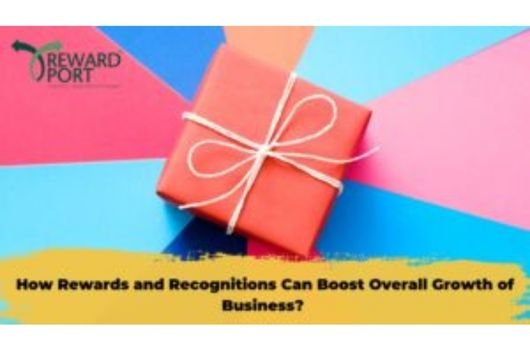
How Rewards and Recognitions Can Boost Overall Growth of Business?
People frequently discuss the employee-employer relationship and how it affects the job. The less discussed fact, however, is the employee’s relationship with the workplace, with colleagues, with the job itself, and so on. A professional relationship does not end with the employee being paid in monetary terms for the work and contributions they make to help the company achieve its goals. The workplace environment and how employees are treated for their contributions must determine the employee’s future, which directly impacts the company’s future and success.
In short, an employee expects more than just money from their job; they expect to be recognized for their talents and skills as an employee reward. For any employee, salary day is the happiest day of the month. However, the success of a company is dependent on how happy and motivated the employee remains for the rest of the day. A solution would be a systematic approach to this need for employee recognition through a reward-based system, thereby highlighting an employee’s exclusive efforts put in for the organization.
Why start a program of rewards and recognitions?
Implementing a rewards and recognition program increases employee engagement, which leads to numerous benefits for the company, such as increased productivity and retention. According to one survey, the most effective way for a manager or company to motivate employees to produce excellent work is through personal recognition.
Recognition programs are effective because they focus on the positives, sending a clear message to employees that what they do matters. Rewarding excellent performance and success with items that your employees’ desire will keep them focused and motivated to do better. These programs encourage employees to set and achieve goals on a daily, weekly, quarterly, and annual basis.
• Corporate culture
Recognition that is frequent and timely has a significant impact on the company’s culture. A company’s culture is the amalgamation of its vision, goals, and ideologies for the greater good. An appreciative workplace culture fosters trust and respect among employees. Employees are allowed to learn about and praise the strengths and unique qualities of their coworkers.
• Boost employee motivation
Recognizing and rewarding employee performance will increase motivation and help employees stay on track and maintain a positive attitude. These programs promote collaboration and provide employees to strive for. When they are rewarded for doing something right, they are more likely to do it again and again.
• Show your gratitude
Employee satisfaction is impossible to achieve unless you show your teams how much you value what they do. By recognizing victories, you send a clear message that they are important to you and the company. This makes employees feel seen, heard, and valued, all of which are necessary for job satisfaction. Employees who are appreciated are happy employees who want to work hard to help the company grow and succeed.
• Encourage healthy competition
Employees’ feelings of friendly rivalry are aided by reward programs. Workers will begin to compare their performance to that of their coworkers and strive to do better the next time. When they reach the top of the list, they will feel accomplished, and everyone on the team will want to be there as well. Communicating one person’s or team’s success to the entire company raises awareness and encourages employees to give it their all.
• Increase productivity
Employees are more engaged at work when their accomplishments are acknowledged, either verbally or with a monetary reward. Teams of workers who are attempting to achieve goals are more productive because they become more efficient with their efforts and energy to meet those objectives and see actual results.
Employees who are more invested in their work and take pride in it are more likely to take a grip on their tasks and finish them on time. When they are evaluated against other workers or progressing toward a reward, they will ensure that the work is of high quality.
• Increase employee retention
Employees who are happy and engaged are more likely to stay. According to one survey of HR professionals, 68% believe that their recognition programs have a positive impact on employee retention. Employees want to work for companies that value them and demonstrate their appreciation through tangible actions. Incorporating rewards and recognition is the type of action that will keep more employees, contributing to the company’s long-term success and growth.
• Company branding
Strong employee branding has become strategically important in today’s competitive world. Effective employee branding attracts the right candidate while also promoting positivity and employee engagement. Building a strong brand identity requires recognition.
When employees feel valued at work, they become active supporters of the company and its products. They engage in positive word-of-mouth promotion on their own. Because of the massive surge in popularity and engagement on various social media sites, they have now emerged as the primary platform for company recognition and promotion. Recognizing good relationships fosters a positive work environment and, as a result, increases employee advocacy.
Conclusion
To summarize, employee recognition affects the bottom line of any business. It results in higher retention rates, increased productivity, and increased self-esteem. Engaging experts like RewardPort to design and execute rewards programs for your staff can help you with the following benefits:
- Implement a consistent program
- Significantly faster outcomes
- Improved client/customer relationships through improved teamwork
The ongoing effort will soon permeate all aspects of your company. As a result, employees will be happier and more productive. Taking the time to thank your employees will ensure that you reap the benefits in the long run.
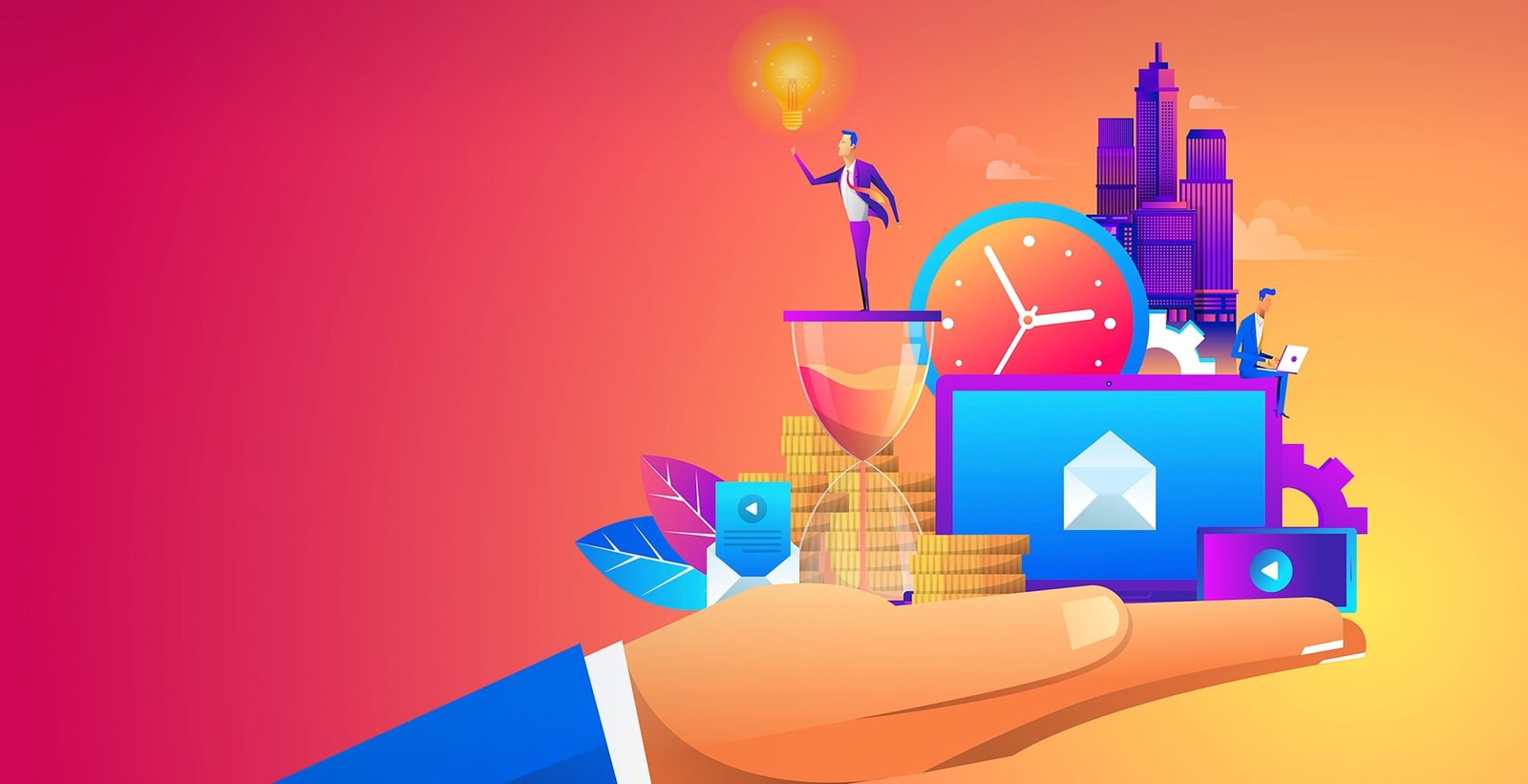
What Brand Engagement Would Look Like Post This Pandemic
Let’s just agree to the fact that the road ahead for most of the brands, big or small, is punctuated by the novel Coronavirus. And everybody is hustling to find new ways to engage with their customers during this pandemic and get their businesses back on track. Zara owner closing down on 16% of its global outlets and investing in online platforms is one such example.
One of my favorite quotes is from Abraham Lincoln. He said, “Things may come to those who wait, but only the things left by those who hustle.” So my dear marketers, hold on to that perseverance for a little longer, and keep hustling, because perseverance with the right technique will help you reap the benefits.
Here are some simple quick tips about brand engagement that will help you gain just the right velocity for your brand during these tough times:
1. Get your online presence right, if you haven’t already
Online marketing is expected to play a bigger role in the longer run. Pay attention to mobile first approach for your websites and apps, as an average Indian is spending around 4 hours a day on their smartphones. Your customers, in all likelihood, would choose a brand that provides a better user experience.
Inditex, parent company of Zara and Massimo Dutti among other brands, is investing $1billion over the next three years to improve their online presence and an additional $1.7 billion on upgrading its stores to become more integrated with its online platform by deploying advanced technology solutions.
“According to research conducted by Qualtrics, when it comes to brand communications, Indians are more interested in the operational impact of COVID-19 compared to sales and promotional marketing.”
2. Keep your business information up to date
Update your customers about your operating hours. You may also want to update your address on Google. When updating your customers about the measures of cleanliness, sanitization and precautions you are taking, try not to overwhelm them with unnecessary information. They are probably already flooded with a lot of information. Try to provide them with helpful information only.
3. Set clear guidelines as per World Health Organization (WHO) protocol
Make sure that your customers, especially existing ones, know about the safety measures your brand has undertaken so that they don’t shy away from engaging with you. Target new customers with the help of precise targeting techniques. Organize free webinars to solve their queries. Host virtual events with your channel partners.
4. Use multichannel to communicate with them
Now is the time to go that extra mile with the communication strategies. Be creative yet relevant with your message. Use relevant influencers to reach your target audience.
“The top three messages respondents wanted to hear were how the business is responding to the crisis (75 per cent), the impact on the distribution (48 per cent), and information on products and services (48 per cent).”
5. Reward customers who regularly interact with your brand
Regardless of whether the customer made a purchase or just interacted with your brand, try rewarding them with some bonuses in the form of loyalty points or just a personalized message saying ‘thank you’ and offering them a discount coupon on their next purchase. This will indeed be a delighting experience for them.
6. Be Sensitive
The last thing you want when engaging with your customers is to sound salsey. Nobody is interested to know the reasons to buy your product. But they may be looking for solutions to their problems. Try selling solutions and not products. Provide them with ‘at-home brand user experience’. Try spreading some joy. This will help build a long term relationship with them.
RewardPort specializes in loyalty marketing programs, corporate loyalty card, dealer incentive programs, dealer loyalty, channel incentive, distributor incentive program, B2B loyalty programs, customer loyalty cards & marketing partner programs. Get a free consultation today.
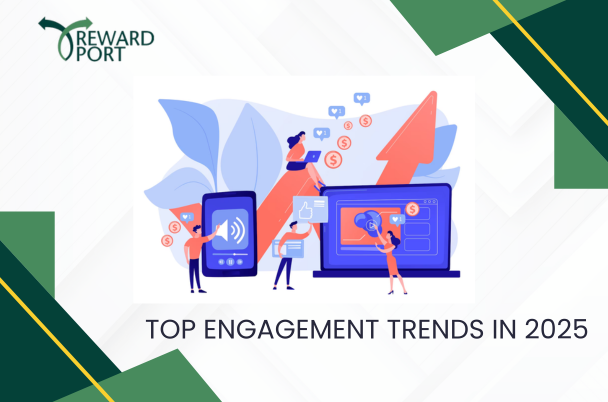
Top Engagement trends in 2025
Businesses try to learn from their past in order to bypass the mistakes made, they look to the future for adapting possibilities that would make the customer happier and improve the overall experience of dealing with the brand.
Customer awareness is ever increasing; make-believe things are quickly Googled to check for its legitimacy. Easy access to information has made the customer search for experiences that are out of the ordinary.
As we look to customer engagement trends coming up in 2025, we need to remember that the customer is a brand in and of themselves. For success, we need to ensure our brands are complimentary to theirs.
1. Personalisation is key
The need for personalised brand interactions is on the rise. Customers feel more valued if the brand has personally had an interaction with them. This value will be measured in terms of brand success and loyalty over the next year.
Customers already expect to be treated as individuals with specific preferences and that trend will become more evident over the next year. The need for the brand to understand and anticipate customer’s needs is going to be ever-increasing. All this seems like a big task for the brands to deal with, however the answer to this question is BIG DATA.
2. Multichannel is to become Omnichannel
Companies have to respond to the ever changing market demands. The current market is dominated by the Millennials, with the future in the hands of Gen-Z.
Both of these generations have grown up on the basis of the internet. Hence, instant gratification is a necessity.
Having an Omnichannel presence will improve the company’s customer engagement as the audience they cater to more ways of accessibility.
“Did you know? According to Marketing Week, 15 years ago the average consumer typically used two touch-points when buying an item and only 7% regularly used more than four. Today consumers use an average of almost six touch points, with 50% regularly using more than four.”“According to PWC, the demand for an omnichannel customer experience will be amplified by the need for nearly perfect execution by 2020”
3. Pro-active Customer Engagement
Debenhams, a large retailer applies a proactive customer engagement approach:
Delivery of in-depth content to inform customers before they decide to make a purchase.
How? They display a vast variety of information on their website that answers frequent questions — from guides on beauty and size guides, as well as home furniture & more.
This doesn’t just help the brand in its SEO strategy, it also helps to trim the overhead costs of returns and support while helping the customer maximizing delight in terms of experience.
4. Internet of Things (IoT) is going to be an integral part of Customer Engagement
“70% of retail decision makers globally are ready to adopt IoT to improve customer experiences”
5. Machine Learning
Machine learning allows computers and devices to learn from experience without any specific programming. Think of it as a seasoned psychology professional that knows your traits. This is done through buying behaviour and browser history.
One example of machine learning is by Netflix. The popular streaming service dishes out movie/show recommendations based on a few titles that you select while signing up. Surprisingly enough these titles are very much what the audience is looking for! How?
Machine Learning’s Predictive Functionality. Based on customer feedback, ratings and browsing habits, the algorithm makes a predictive decision. The customer experience is vastly improved by such pro-active efforts which result in the customer being engaged with the brand.
Machine Learning in 2025 is expected to rise on all accounts. An ever-increasing number of companies are adapting this technology to improve customer experience and make machine learning a friend in need in the virtual world.
To Conclude:
Customer experience is to be vastly improved in 2025. Through personalisation and implementation of various advances in technology, companies are trying to win over the customer. It is to be seen how the customers react to these trends and if brand loyalty will gain a stronghold due to improvements in customer experience.
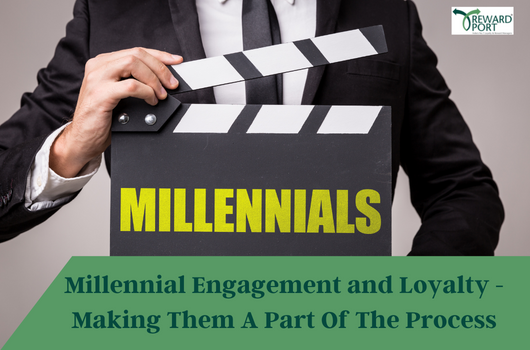
Millennial Engagement And Loyalty – Making Them A Part Of The Process
Millennials, or people born roughly between 1980 and 2000, are tough customers in both the literal and proverbial sense. With social media, subscription boxes and targeted advertisements following consumers on every website they visit, it’s easy for shoppers to get distracted.
Since most of these teenagers to thirty-somethings were born into the age of e-commerce, it’s easy to assume they’re susceptible to the intrigue created by the new brands and products constantly inundating their screens.
Millennials represent the modern consumer. With this in mind, it’s no surprise that companies across all industries and verticals are catering to the needs of millennials as a way to earn their loyalties. Traditional methods of advertising have been proven ineffective in capturing their attention.
Most people are never more than a tap, swipe or click away from almost anything. The fact remains that the digital world has forcefully inserted itself into all the phases of the buying process, especially for the millennial generation. As more millennials begin to enter the market, the question that arises is- how companies can appeal to these digital natives?
Agreed, millennials are choosy about their brands, but they are also more willing than older generations to switch brands if they can save money by doing so. While advertising may seem like the go-to strategy.
There are more efficient ways to get in front of this audience and reach them time and time again
1. Personalization
Millennials want to know that a company is paying attention to their specific needs. The critical component of delivering a personalized digital experience is a mobile-first strategy that guides each customer through all phases of the shopping journey. The look and feel of a customized product are important to the members of this generation who has an open- door policy.
They are more likely in the first place to listen to your pitch, even if you are pitching from a brand they haven’t heard before. Companies can present options, targeted messages, recommendations and personalized services that can be effective in the right circumstances. To attract millennial shoppers, brands must think in terms of experience, not discounts and offers off alone.
Brands can approach experience-focused programs in a number of ways, such as offering customers free shipping, skipping a checkout line, early access to a sale or the ability to view products before other customers. By focusing on the experience and personalization, brands can help shoppers feel as if they’re a part of something bigger than just a loyalty program, thus building an emotional relationship with the consumer, which is key for Millennials.
2. Engagement
In addition to providing a great product, responding and engaging with millennials in a timely and authentic way will also help cement a long-term relationship. As a tech-savvy and highly connected generation, it is no surprise that millennials are drawn to loyalty programs that engage them through various channels. Whether online, mobile app or in-store, brands can reinforce millennial loyalty with a program that keeps them looped into the brand experience.
It’s important to have a cohesive marketing strategy across the brand’s website, e-mail campaigns and social media properties for relevant communication to elevate customer loyalty. Based on data collected from these sources, platforms can be used reengage, share new opportunities, offers and promotions that will keep millennial shoppers hooked and coming back for more.
Social media as a platform is not only great for consistent, relevant communication but also has the added benefit of facilitating peer-to-peer recommendations, which many millennial shoppers turn to before making purchases. By adding game-like features to their reward program, brands have the potential to create customizable and rewarding experiences, providing entertainment value to the customer while bolstering engagement.
3. Convenience
Even a loyalty program with experiential components, engaging qualities, and price, the ultimate deciding factor can turn off this generation, if it is difficult to use. While millennials rely on technology to streamline their lives, they expect digital solutions to augment their experiences.
This means brands must develop loyalty programs that are frictionless and easy to navigate across various channels – whether on a laptop, desktop, a mobile or a tablet. Millennials are quick to abandon slow-loading apps or confusing interfaces that do not save them the time or add value to their lives.
Like other leading mobile solutions, loyalty programs can capitalize on common mobile strategies like real-time alerts, multichannel capabilities, and personalization or even technologies like mobile wallets.
Brands that want to capture this demographic will have to abandon traditional, shop-worn loyalty strategies in favor of new programs that emphasize experience, engagement, and convenience. Appealing to this demographic requires brands to ensure that the ways they deliver their rewards programs are as flexible and mobile as millennials are themselves.
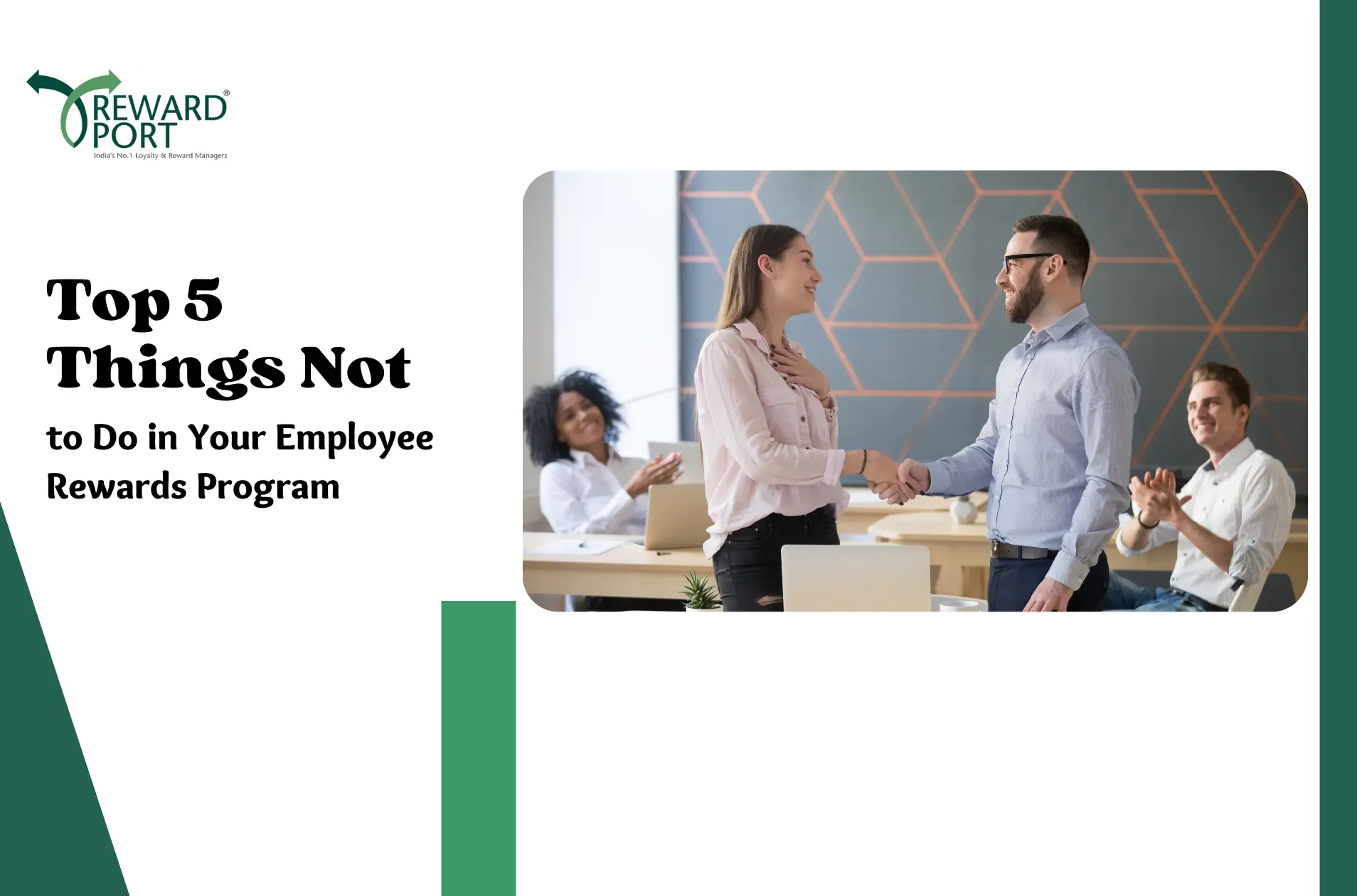
Top 5 Things Not to Do in Your Employee Rewards Program
Employee rewards programs sound like something we can all benefit from, based of some known facts: generic rewards aren’t entirely effective, whereas the ones tailored to compliment the company can have a significant impact. Custom employee rewards contribute significantly to boost the engagement and company culture.
Upon due consideration, we must realise the fact that implementing a rewards program isn’t always a step forward to success, unless it’s done the right way. Following this statement, is a list of the top five things not to do when designing a detailed employee rewards program:
1. Turning a Blind Eye to The History
One must never design a rewards program without an in depth knowledge and a detailed insight into the company’s past history with rewards. Finances are always to be kept in check; the tangible rewards mustn’t be finalised without identifying the appropriate behaviours to be rewarded.
Rewards can be misused and misdirected; behaviours can’t always be changed without social reinforcement. Make wise decisions because reward programs tend to take the wrong direction, a consequence of an unplanned beginning.
2. Basing KPI’s on Biased Assumptions
Presuming that one knows what behaviours should be rewarded to produce the desired business growth, can be a reason for an unsuccessful rewards program. Observe, learn, converse, and connect with the employees to identify the behaviours that need addressing. Basing KPI’s on assumptions leaves a scope for biased opinions, which in turn, leads to undesired growth factors.
3. Ignoring the Objective Metrics:
Know the objectives of your rewards program and figure out a way to measure them. A common mistake occurs when only the subjective measures of effectiveness are considered, ignoring the objective metrics. Rewarding the wrong behaviour is never recommended. Remember, what you reward is what you’ll receive.
4. Undermining the Feedbacks
Rewards program tend to flourish when they incorporate employee and manager input. The job isn’t done yet, with rewarding; it requires taking feedbacks to find out if the reward makes an impact. Ask the recipients for a scope of improvement and apply the principles learned to design better the next time.
5. Underestimating the Significance of Recognition
Individuals who earn the rewards for their exceptional performances must know the specific reason for the recognition. A meaningful, sincere recognition encourages a positive behaviour in the future. Don’t restrict the rewards program to a mere transaction; it can be a great step forward to build personal relationships.
Appreciation is a fundamental need for humans to work with some motivation. Employees respond to appreciation because it is a reassurance of the value of their work. When recognised in a proper way, the productivity is set to increase, for there is a motivation to keep up the good work.
Hence, an employee rewards program requires a lot of planning and organisation, to work in an unperturbed fashion; keeping in mind the foremost things to avoid. A well planned ERP can act like a catalyst, and give cause to an exponentially rising upsurge in the business charts of a company.
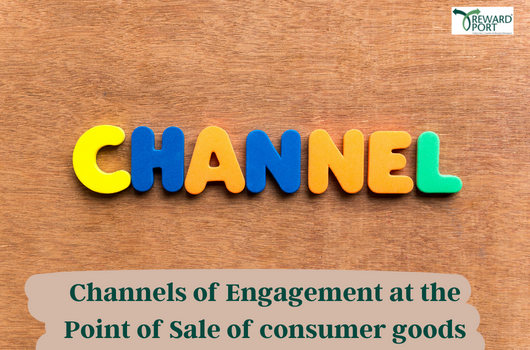
Channels of Engagement at the Point of Sale of Consumer Goods
It is interesting to talk about a subject that is creating so much buzz across various business circles. There is a lot of evidence that points to businesses enjoying higher sales through active engagement of their point of sales units. The influence of the out of store online activities on in-store purchase decisions is unique and worth a close look. The moment a consumer is about to do a transaction; it is critical to build loyalty and create multiple income channels for your business.
The message of marketers to attract customer interest in various brands has reached a saturation stage. Sadly, this has led to a point of diminishing returns for marketers who operate in various industries. This means that any business that wants to stay ahead of the pack must be able to communicate with its consumers at the right moments in order to win the lion’s share of the customer’s attention.
One of the best ways to engage this opportunity or business dynamic is to envision the engaged consumer as a segment all by itself. Many brands have an opportunity to engage a great number of their clients but are not paying attention to this new trend. It is important to give a high priority to this move in order to draw customers that would be loyal and valuable to your brand in the long term.
Here are 4 of the Channels of engagement at the point of sale of consumer goods that is generating the right results:
1. Text Message promotions
Shoppers can be enticed to enter contests while shopping with the use of an effective text message. It is important to get the buyers’ consent in order to interact with them and build a strong following for your brand through their mobile device. About 67% of individuals do their shopping through a mobile device so this is a channel that must not be overlooked. You can create a trend by telling them the best time to shop while tying it to various store locations where you may want to drive increased sales.
2. Email Coupon programs
Consumers can register to receive limited time offers and coupons from their favorite brands. They opt in for such messages/communication from in-store promotions, brand websites, text message, mail messages or in response to calls. You can track the conversion rate from this medium and further understand the location from which the consumer makes the purchase. This can help you to build a strong data and dominate the market that you serve.
3. Brand Websites
Consumers are encouraged to register on the sites and provide important details about themselves. The data would capture their social network profile, information about their household and this can aid the message, research, segmentation or relevance of your sales approach to reach them. This can help you create a stronger engagement with even the most passive customer on your list.
4. Social Media
Social media connects brands to their customers like no other channel. When this avenue is well harnessed, it can influence the shopper’s behavior and increase the profit margins of any business.
